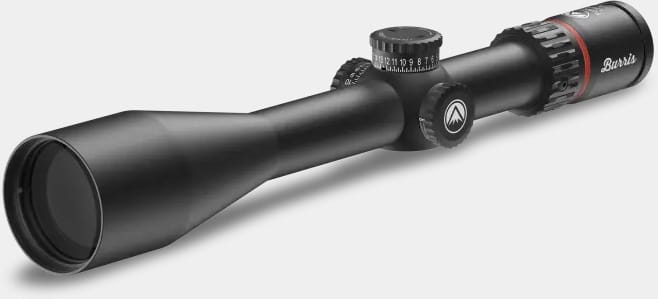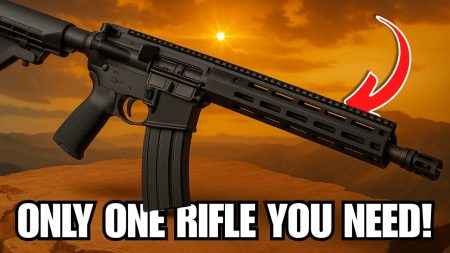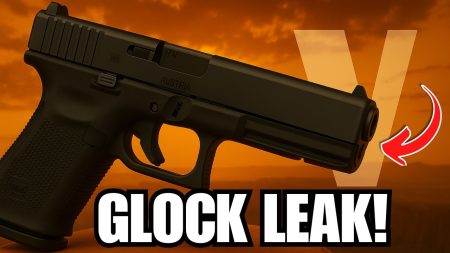Editor’s Note: The scope discussed in this article was provided to the author by Burris Optics for inclusion here.
I hadn’t meant to test a scope that day. Checking zero from prone in a pasture on the eve of deer season, I’d punched center at 200 yards. For a final poke at 300, I grabbed a fresh target and trotted out as my friend hopped in his truck to paint a plate for his long-range rifle. My lever-action, still on the mat, escaped his notice. He drove over its comb, tang and receiver, also the scope’s eyepiece. Mashed into the pasture, the lever bent and the stock splintered in three places. After a few awkward moments around the casualty, we came up with duct tape. Several wraps bound the grip. With tire tools, we freed the action. The scope, surprisingly, appeared intact. Muscling the bolt closed, I bellied down, hoping all the injured parts would stay together and that the bullet would land somewhere on paper. To our astonishment, it struck point of aim at 200! I would later kill a deer and a pronghorn with that bandaged rifle.
My rifles have worn Burris scopes since the Carter administration. In 1971 engineer Don Burris had been working for Redfield for over a decade. When he joined the firm, John Redfield’s widow was still part-owner. So was a son, Watt, and Ida Kellogg, his sister. Owen Tytegraff and Ed Hilliard owned shares, too. Redfield had recently bought the Massachusetts-based Kollmorgen Bear Cub scope line, and was moving the tooling to Denver.
Don Burris contributed much to Redfield, specifically rangefinders and non-magnifying reticles; also, a superb internally adjustable target scope. Redfield’s Model 3200 — named, I’ll hazard, for a perfect score in a two-day small-bore prone match — upstaged Lyman’s mount-adjustable Super Targetspot. On Michigan State University’s rifle team then, I scraped up $100 for a second-hand 3200. It would bring me two state prone titles. I should have bought a pallet of 3200s.
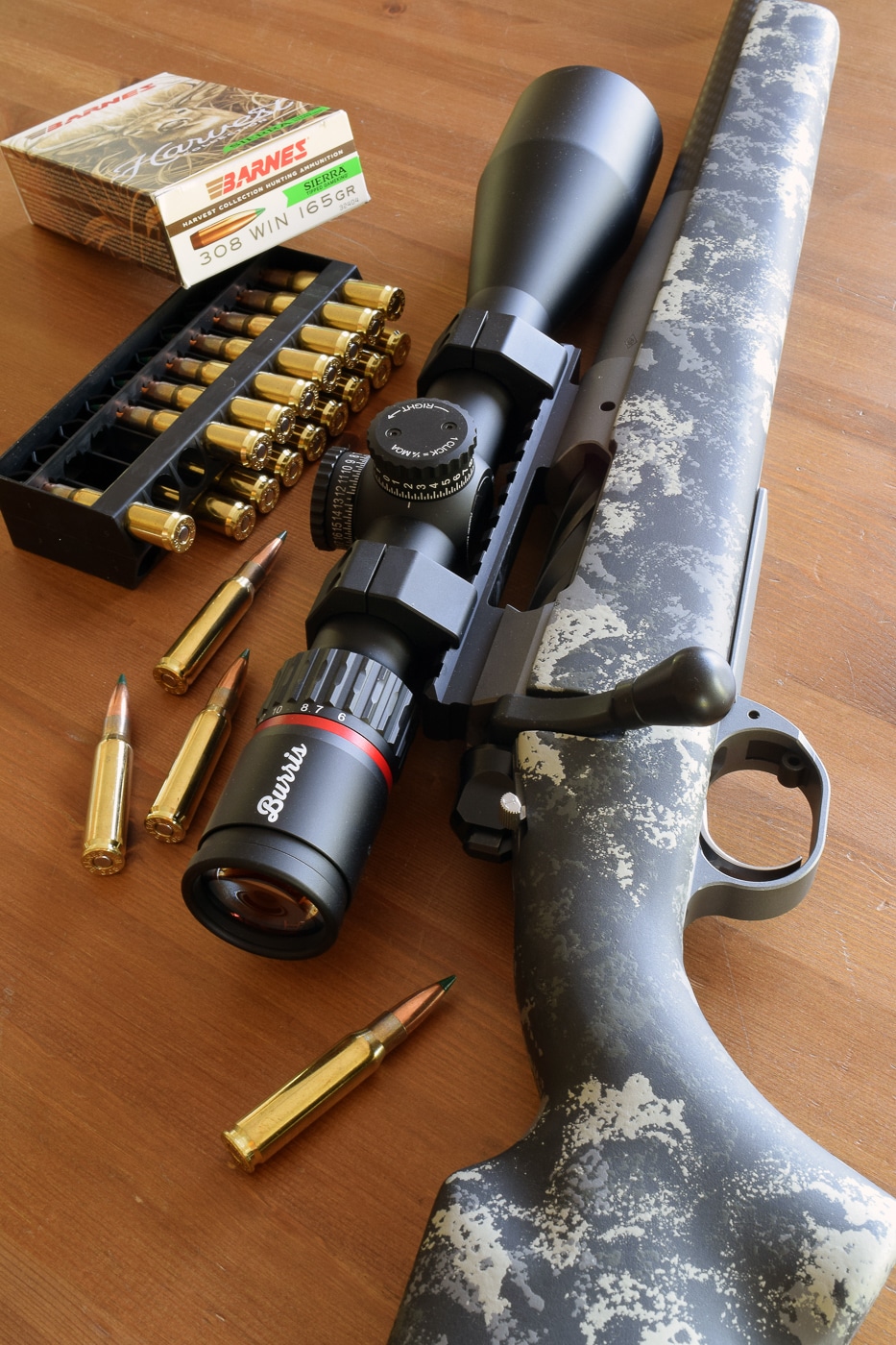
After Ed Hilliard perished in a mountain-climbing accident in 1970, Don Burris decided to pursue his dream of founding his own company. The next year, he left Redfield. Early in 1972, he established his scope-making enterprise in Greeley, east of Denver. He worked to give his scopes bigger fields of view, more repeatable adjustments. He demanded that seals pass immersion tests in 130-degree water.
A New Beginning
In 1975, Burris introduced its first three scopes: the Fullfield series. The 4x, 2-7x and 3-9x had 1-inch alloy tubes, big ocular lenses. The 4x’s 37-foot FOV at 100 yards was up to 20 percent wider than those of competing brands. Burris also cataloged scope mounts, the bases and rings interchangeable with Redfield’s and Leupold’s.
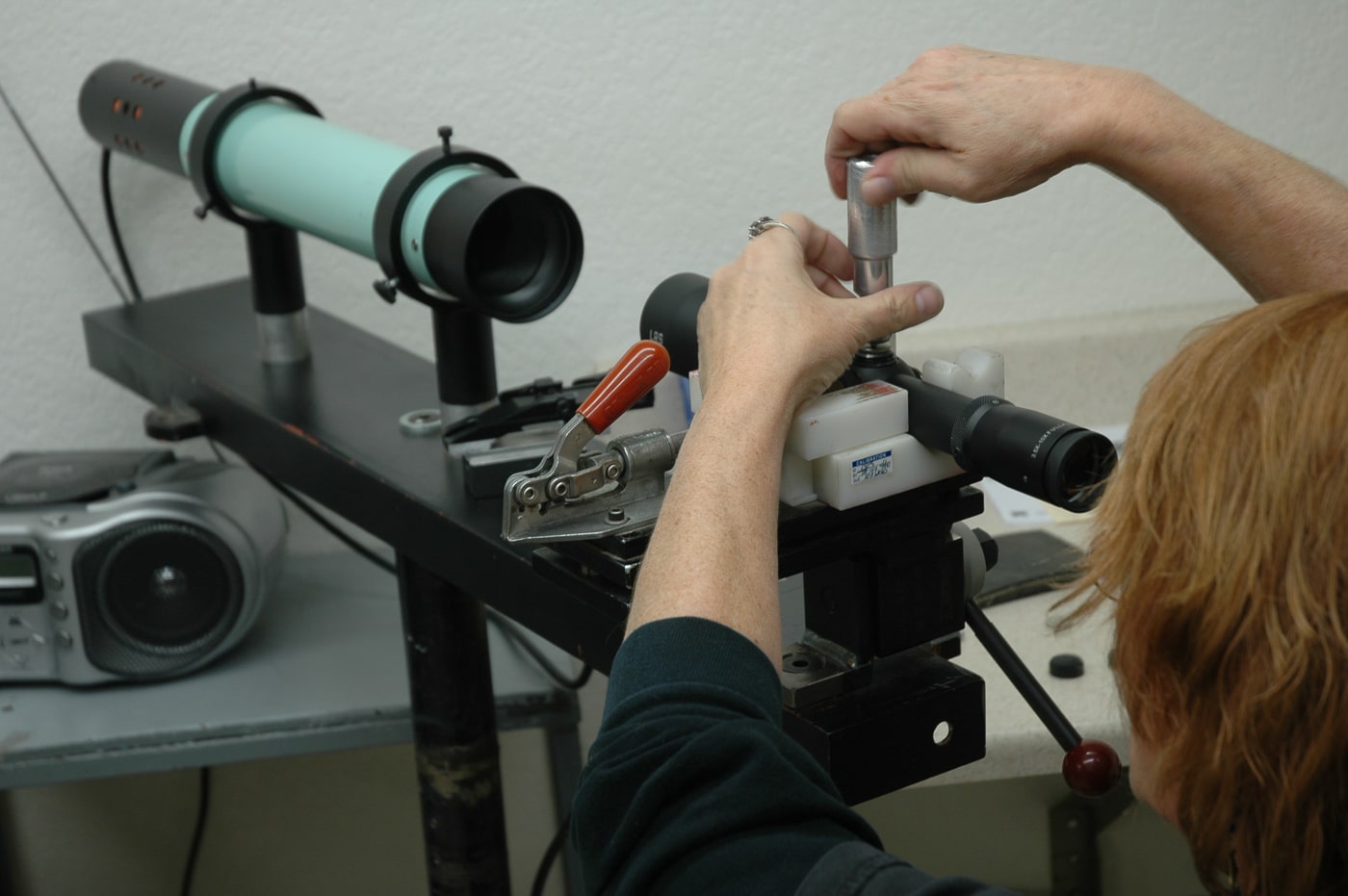
The 2 ¾x, 6x and 1 ¾-5x scopes that followed were as practical as their predecessors. Soon the company was courting varminters with a 10x, a 12x and a 4-12x. Their adjustable objectives eliminated parallax error and refined target focus. “Hi-Lume” lens coatings in Burris variables were among the first multi-coat treatments to hike light transmission in U.S. scopes. Fully multi-coated glass (all lens surfaces) has since become standard across the industry.
While ever bigger, more powerful scopes fought for the hunter’s dollar, Burris offered three Mini scopes. The 4x, 6x and 8x weighed around 9 ounces. Only the 8x had a front bell. Stoutly built and with 3.75-inch eye relief, the 4x and 6x excelled as hunting sights and deserved better than they got at market. For handguns and mid-barrel mounting on carbines and Scout rifles, Burris produced LER and IER (long- and intermediate-eye-relief) scopes. In 1981 the company added range-compensating reticles.
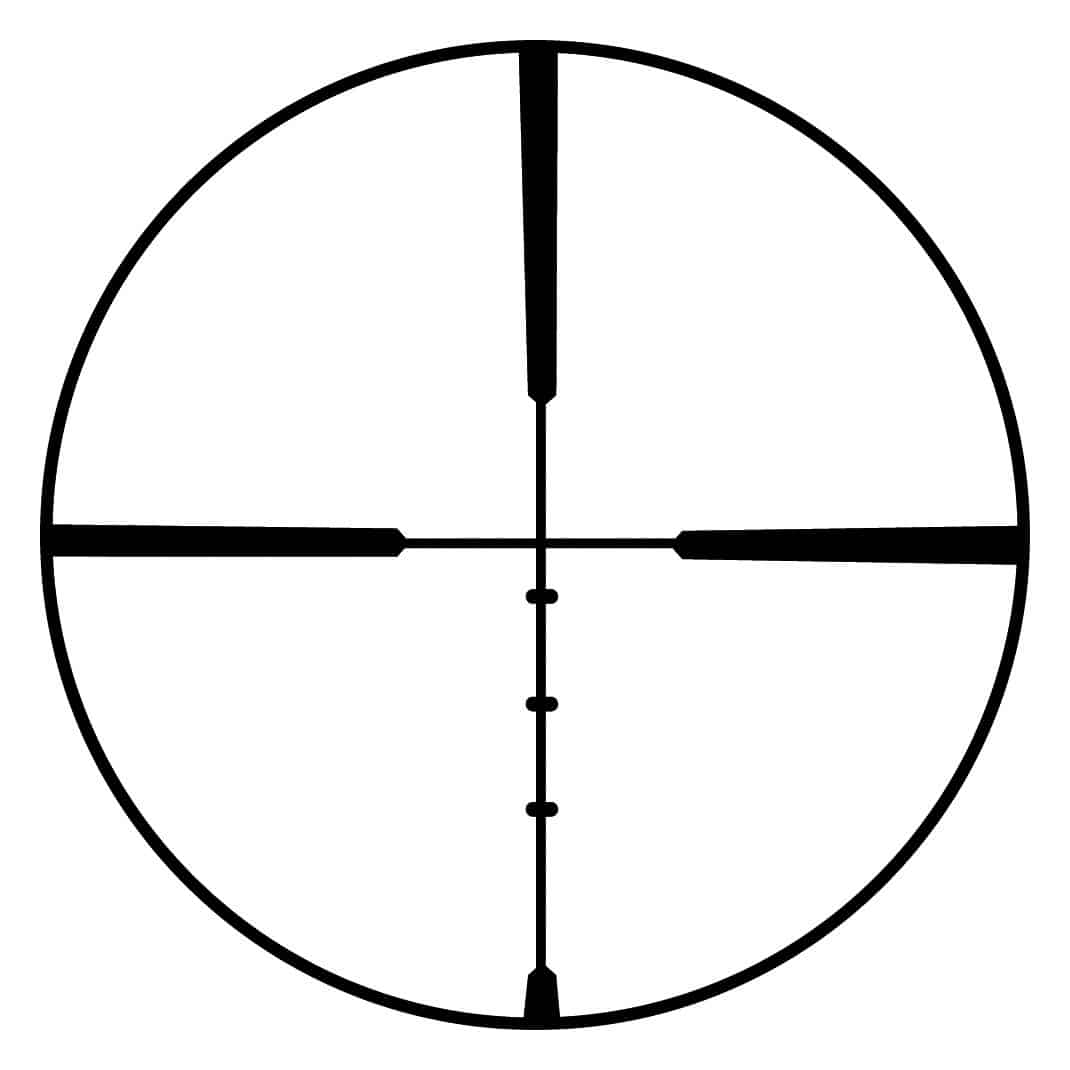
By the time Don passed in 1987, I was hunting routinely with Burris scopes. Once on Wyoming prairie, a fine pronghorn buck appeared a quarter mile off. Keeping low, I was closing the gap when on a swale’s lip I bellied up on his harem. There was no way around. My target was still 380 yards distant — a long poke. But my .280 wore a Burris scope with Ballistic Plex reticle. Three bars intelligently spaced on the bottom wire reflected a bullet’s parabolic arc. If memory serves, for popular loads those bars marked approximate impact at 200, 300 and 400 yards. The span between the bottom bars also helped me range that buck. His horns taped 16 inches. I’m still sweet on the clean, simple Ballistic Plex reticle.
Looking Ahead
Since those early days, the scope market has swung to 30mm tubes, higher magnification, wider power ranges and more features, from “dial-to-the-distance” elevation controls to digital aiming points determined with help from Bluetooth. The Burris Eliminator linked laser ranging with an electronic reticle. Ungainly but functional, it tapped stored ballistic data to illuminate a dot that showed where the bullet would hit at the lasered distance.
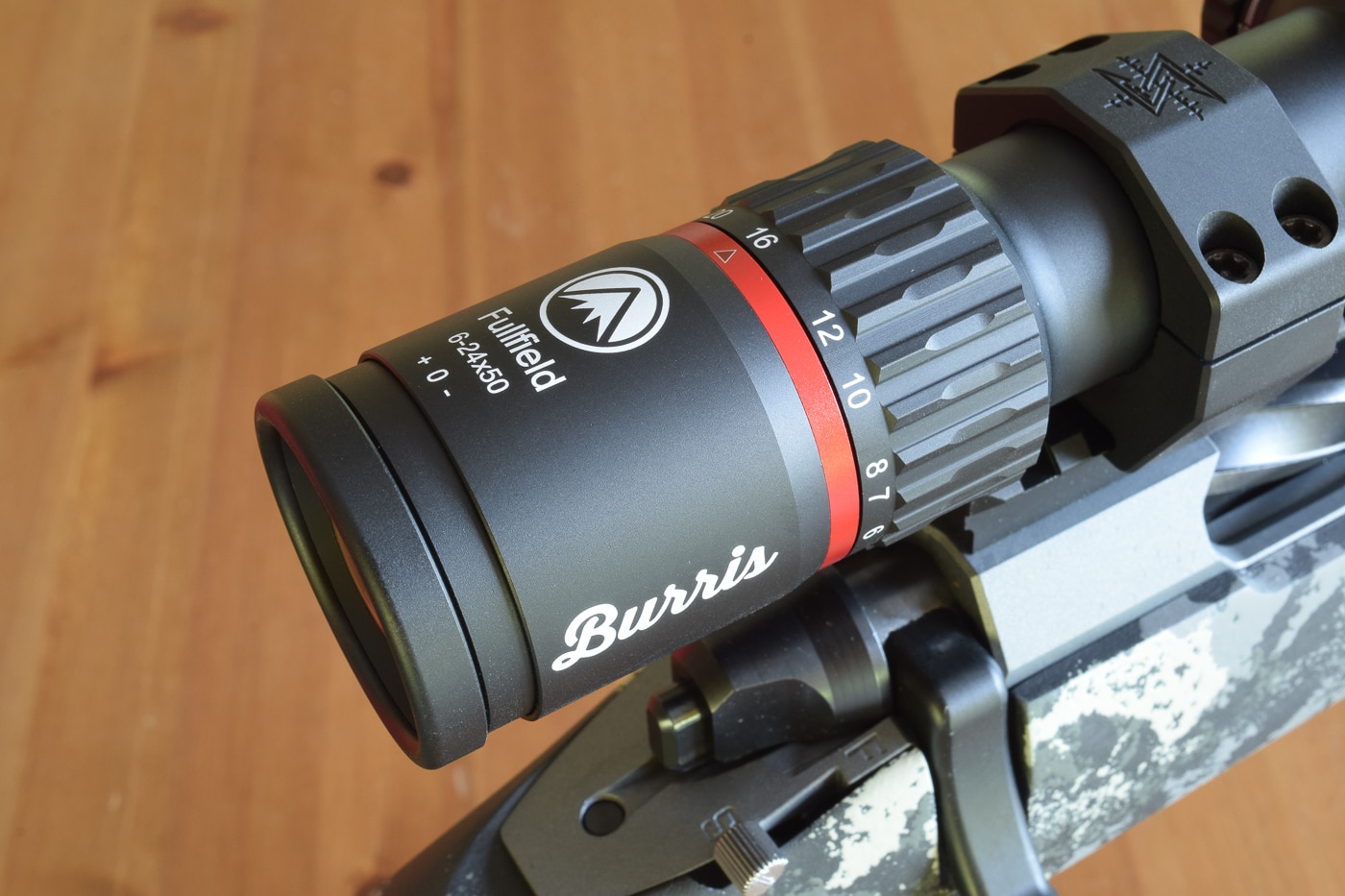
Later renditions had longer reach, less bulk. They were rugged, too. One hunter stalking a mountain goat fumbled his rifle. It fell 500 feet onto rocks. After a difficult retrieve, he found the zero had not changed! At 30 ounces, the 4-20×52 Eliminator 6 is just an ounce heavier than the 5 and reads to 2,000 yards. And, praise be, it now looks like a rifle-scope!
Bluetooth-friendly, it has a rear-plane reticle, ED glass, 1/8-minute W/E dials, a focus/parallax adjustment. It endures temperatures from -15 to 120 F. Burris has drop numbers for 1,500 factory loads. Ballistics programs (or ballistic coefficients with velocity data) let you add handloads. The Eliminator 6 uses a CR2025 battery and retails for $2,500.
Burris’ Veracity line offers useful advances without going overboard. The initial series (2-10×42, 3-15×50, 4-20×50, 5-25×50) has been refined. The current 2.5-12×42, 3-15×44 and 4-20×50 scopes boast 30mm tubes, illuminated first-plane reticles, focus/parallax dials and now heads-up digital displays that show dialed elevation and wind values, rifle cant and battery level. These scopes weigh from 27.3 to 29.1 ounces, cost $1,100 to $1,300.
For long-range enthusiasts, Burris lists the XTR PS 3.3-18×50 and 5.5-30×56 scopes, each with a 34mm tube, illuminated first-plane range- and wind-compensating reticle, focus/parallax adjustment and digital MIL W/E dials. There’s also a digital level and 20 on-board density altitude settings. The 1-inch XTR Pro 5.5-30×56, available in red and black finish, is similarly designed for hits out yonder. Like XTR PS scopes, it weighs over 35 ounces. These competition scopes start at $2,400.
In Particular
I prefer lighter sights, even with high magnification. So, the new Burris Fullfield 6-24×50 caught my eye. At under 19 ounces, it weighs less than many mid-power scopes. It’s the most powerful of fifth-generation Fullfields, which include a 2-8×35, a 2.5-10×42, a 3-12×42, a 3-12×56 and a 4-16×50. Like the 3-12×56, the 6-24×50 has a 30mm tube. The others are an inch in diameter.
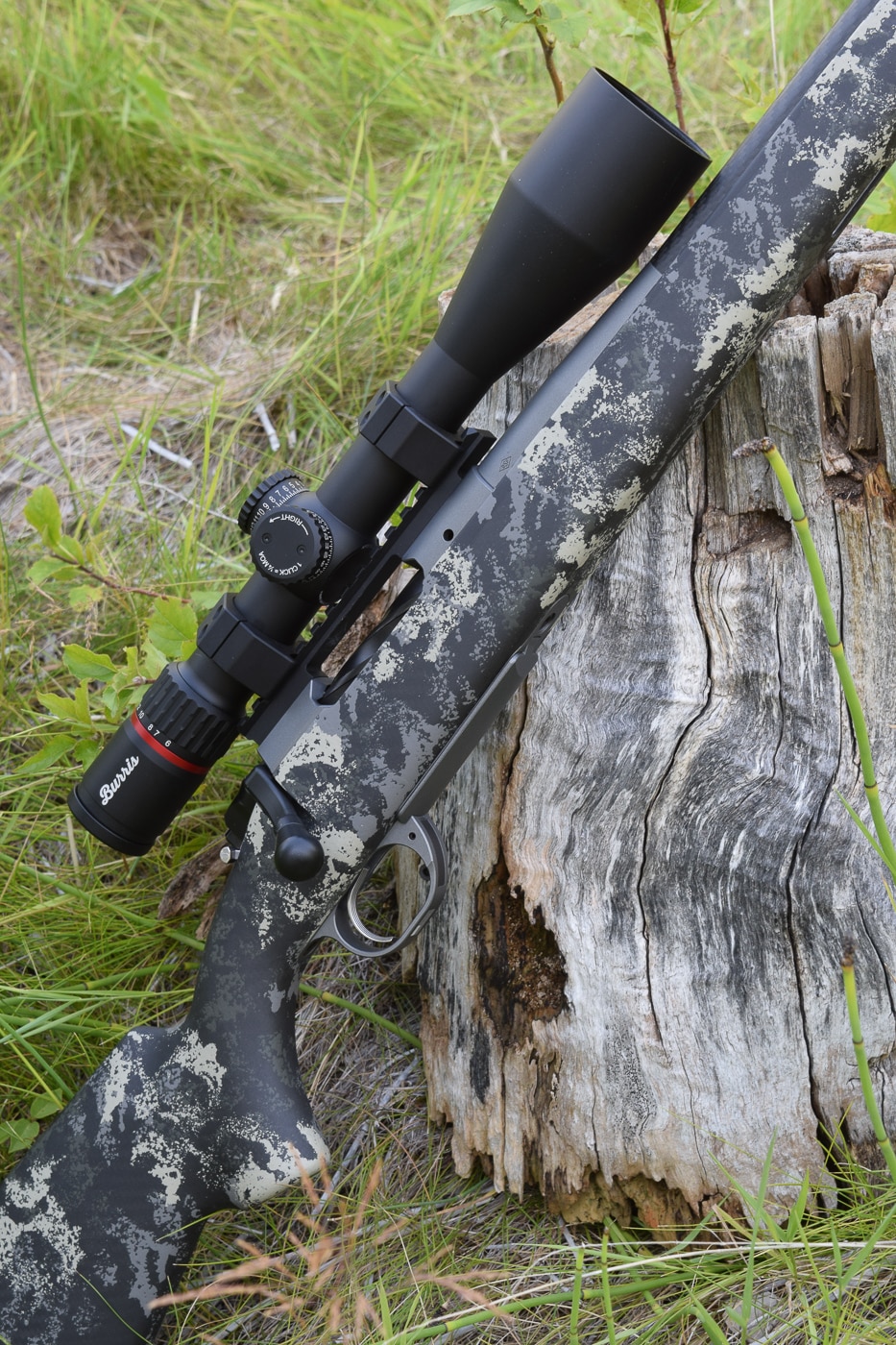
Given its modest heft but 24x top end, I wanted to pair this new scope with a lightweight but very accurate rifle. A Springfield Armory “Boundary” bolt-action in my rack was the perfect match. This .308 had proven capable of nipping one-hole knots with 165-grain Sierra Tipped GameKings in new Barnes “Harvest Collection” factory loads. Cinching the 6-24×50 Fullfield onto the Boundary’s rail in medium rings left plenty of space between the objective bell and the rifle’s thick carbon-fiber barrel.
I gathered up ammo and, on a sunny but gusty morning, hied off to the range.
While most of my hunting is with iron sights and low-power scopes, I’m always delighted to see targets through a powerful optic. It reveals the antics of mirage and the gyrations of my pulse. It makes calling shots easy. And there’s no need for a spotting scope.
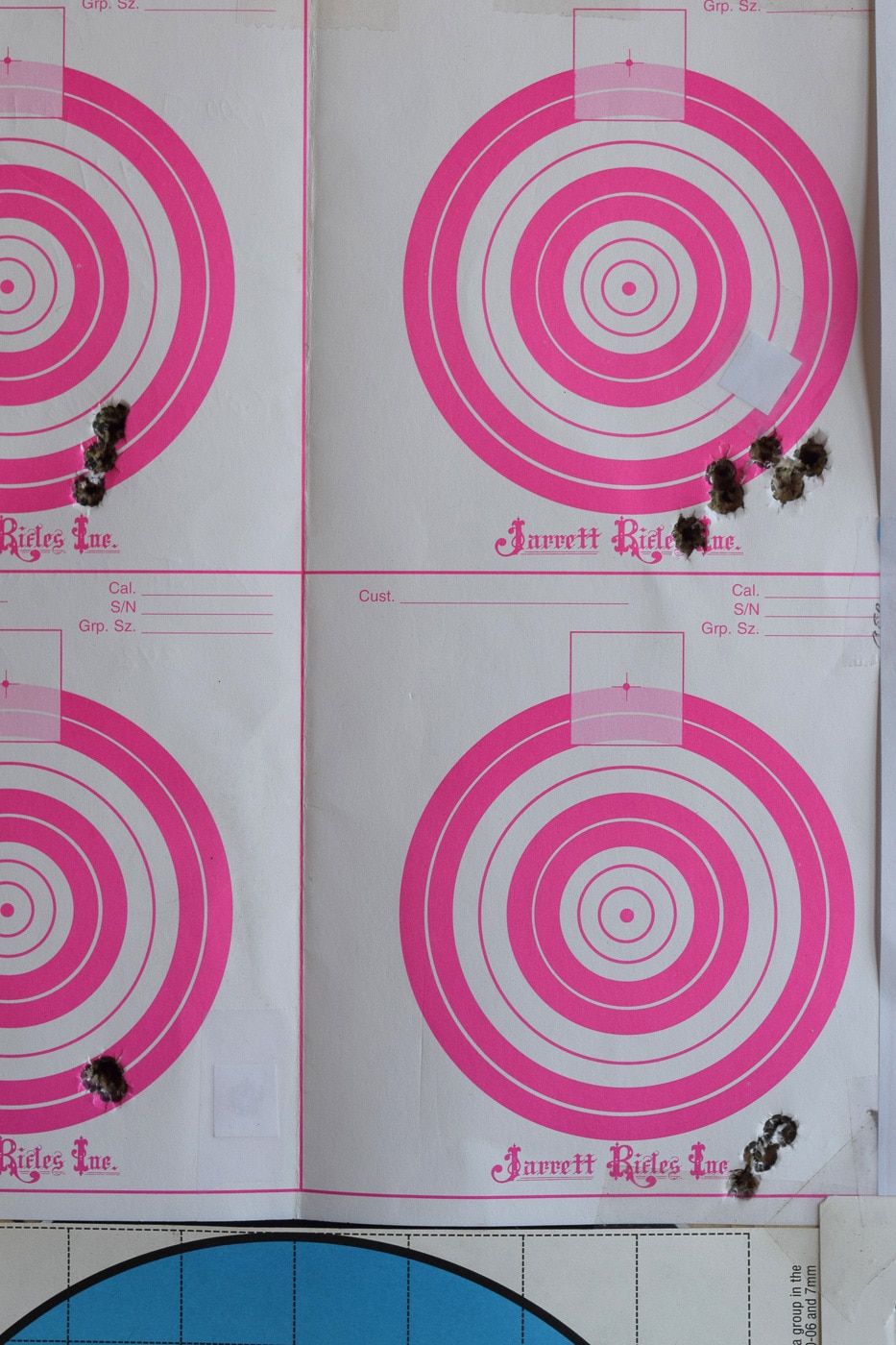
The current infatuation of hunters with high magnification is no mystery. It delivers the precision needed to make killing hits at distance, or when just a sliver of rib peeks from a thicket at woods ranges. The longest shots I’ve taken afield were at a Coues buck and an elk. Neither animal offered the possibility of a closer approach. The wind was lying down nicely. Sling taut from prone, with power dials topped out at 20x and 16x, I was confident of a fatal hit on each animal. Both fell dead at the shot.
Alas, the weight and bulk of high-power scopes have no virtues, other than being attached to high magnification when you want it. Above 14x a 50mm objective is a real benefit in dim conditions. The exit pupil of a 6-24×50 scope — the diameter of the bundle of light it delivers to your eye — is just over 6mm at 8x (50/8). That’s all the light you can use in the dimmest shooting conditions, because it’s roughly as big as the diameter of your eye’s dilated pupil. But at 20x, even big 50mm objective glass delivers an EP of only 2.5mm (50/20), of limited value at dawn and dusk.
While a 50mm front lens is arguably as small as is practical in a hunting scope with a top end of 20x or 24x, this fifth-generation Burris Fullfield is otherwise trim. Its one-piece 30mm aluminum tube has a compact turret with low exposed dials, not long stems protruding like triggers on harbor mines. The left-side focus/parallax dial is easy to grasp but no bigger than need be. The eyepiece is delightfully modest — 1.6 inches in diameter and 3.2 inches long, or just .1 inch longer than that of my 2-7×35 Burris.
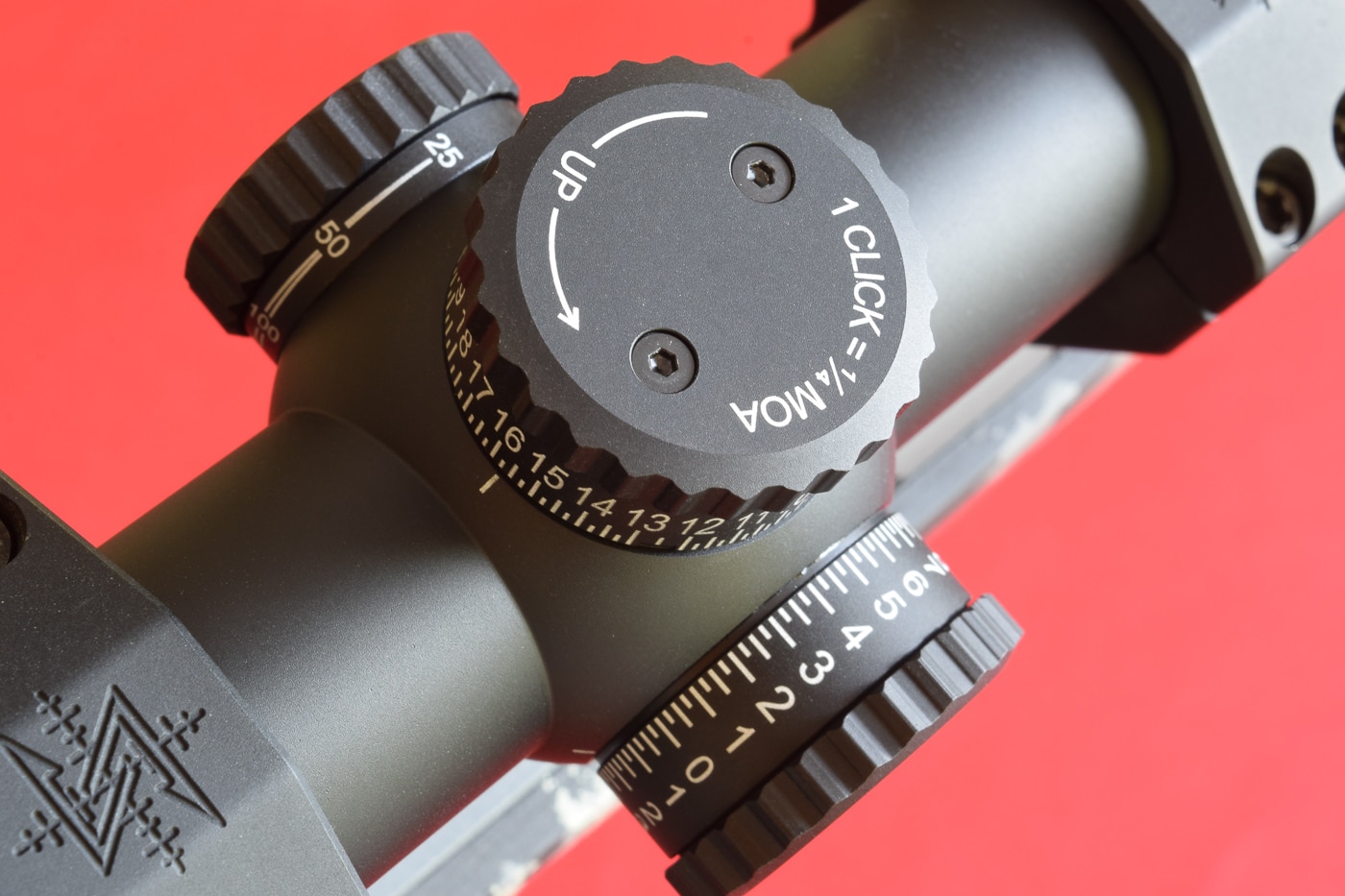
Field of view of the new 6-24x is 17 feet at 100 yards at 6x. At 24x, it shrinks to just under 5 feet. From the bench, my eye instantly caught rim-to-rim sight pictures, even at high magnification. From field positions, I appreciated the 3.4 inches of eye relief — adequate and not critical.
There’s plenty of free tube on the 14.4-inch 6-24×50 — 2 inches in the rear, 3.1 inches up front — so you can place rings where the rifle action and your shooting style demand. A 50mm objective seldom pairs well with low rings, but the Springfield Boundary has a Picatinny rail that with medium rings brings the scope’s bell well clear of the carbon-fiber barrel. Stock combs of nearly all current bolt-action sporters are high enough for natural aim through scopes in medium rings.
This scope’s Ballistic E3 reticle is essentially the Ballistic Plex with added dots and hash marks. To me, these are of marginal utility. Unlike some high-power scopes with spiderwebs of lines and dots, however, the E3 is quite open, and I had no trouble finding and keeping my eye on its center. The “wires” seem of perfect thickness for an open-country scope, neither too fine nor too course. In the second or rear focal plane, the reticle keeps the same apparent dimension through power changes. While Burris offers an illuminated E3 in the 6-24×50, I declined it.
On Paper
Windage and elevation dials have quarter-minute graduations, each click moving point of impact 1/4 inch at 100 yards. It’s my habit to test those values, and how well the dials hold them on the return, by “shooting around the square.” After zeroing at 100 yards, I fire a three-shot group on a generous sheet of paper. Then I dial 20 clicks right windage and, using the original aiming point, punch another group. Adding 20 clicks of elevation, I fire a third. Twenty clicks left set me up for a fourth group. Finally, I dial 20 clicks down to my original sight setting. If the dials are repeatable, my last shots should print into my first group. Measuring distances between group centers and dividing by 20 yields actual click value.
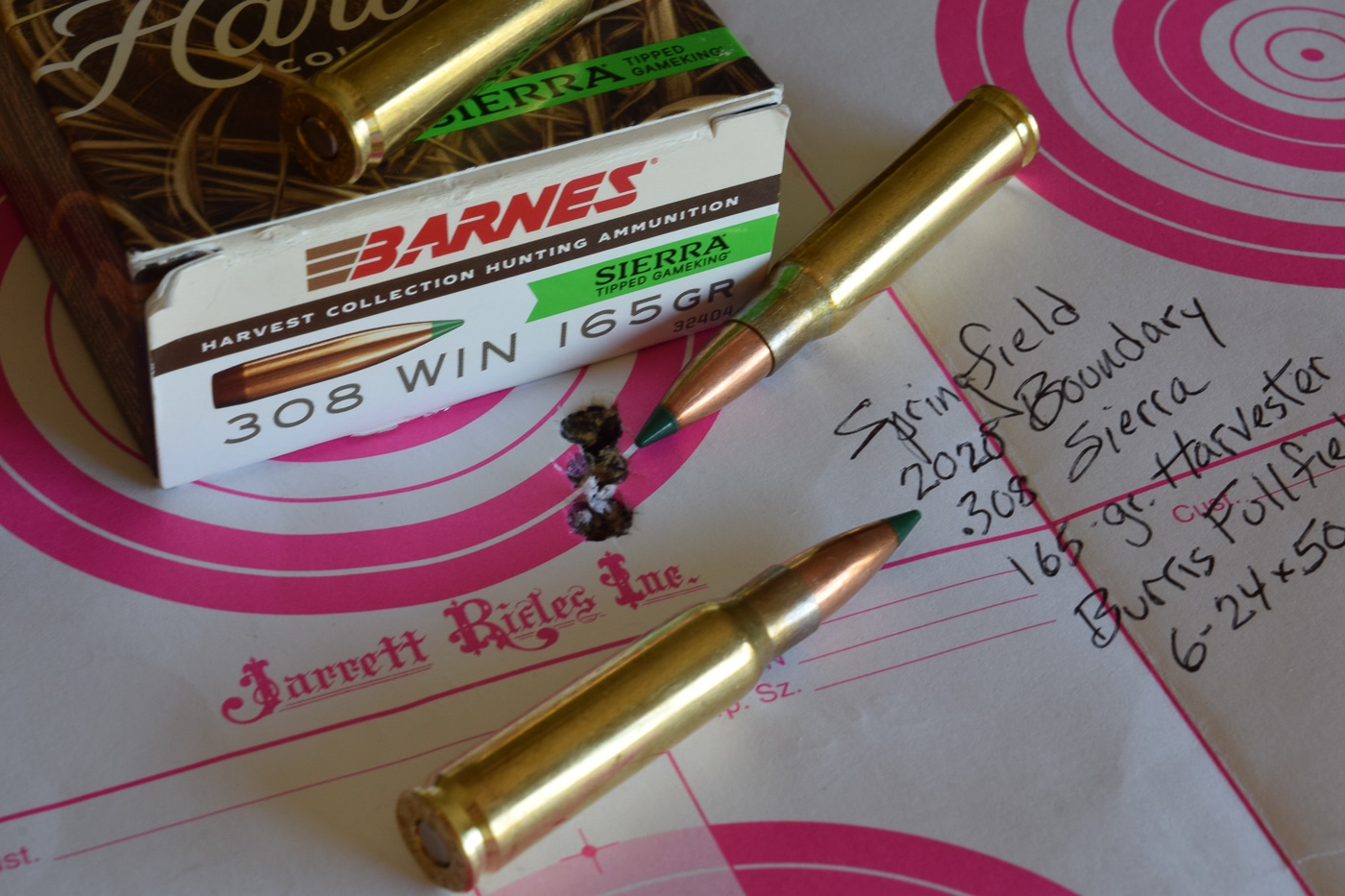
Five groups of 165-grain Sierra bullets from .308 Barnes Harvest Collection factory loads, sent by Springfield Armory’s Boundary, averaged well under an inch and within the rifle’s accuracy guarantee. Vertical and horizontal shifts to group centers from 20 clicks of the 6-24×50 averaged 5.75 inches. All five groups came within .3 inch of that measure. Per-click value: .2875 inch. Verily, I’ve found many scopes miss the .25 standard. The figure matters little if you’re zeroing a hunting rifle. Even if you often adjust W/E dials, the important thing is that you remember that number. About the only time precise quarter-minute values count is in long-range matches when you grab handfuls of clicks to hit small targets in changing conditions. Other values beg brain-frying math.
So I’m fine with .2875 — say, .29 — per click. The “double-spring” turret limits backlash. Burris’ “knob synergy” permits easy installation of custom dials.
More important: consistency. Here the Burris scope shines. The fifth group, after 80 clicks around the square, landed atop the first. Difference in group centers, best as I could determine in the tight six-shot clump, was about a quarter-inch. These dials repeat!
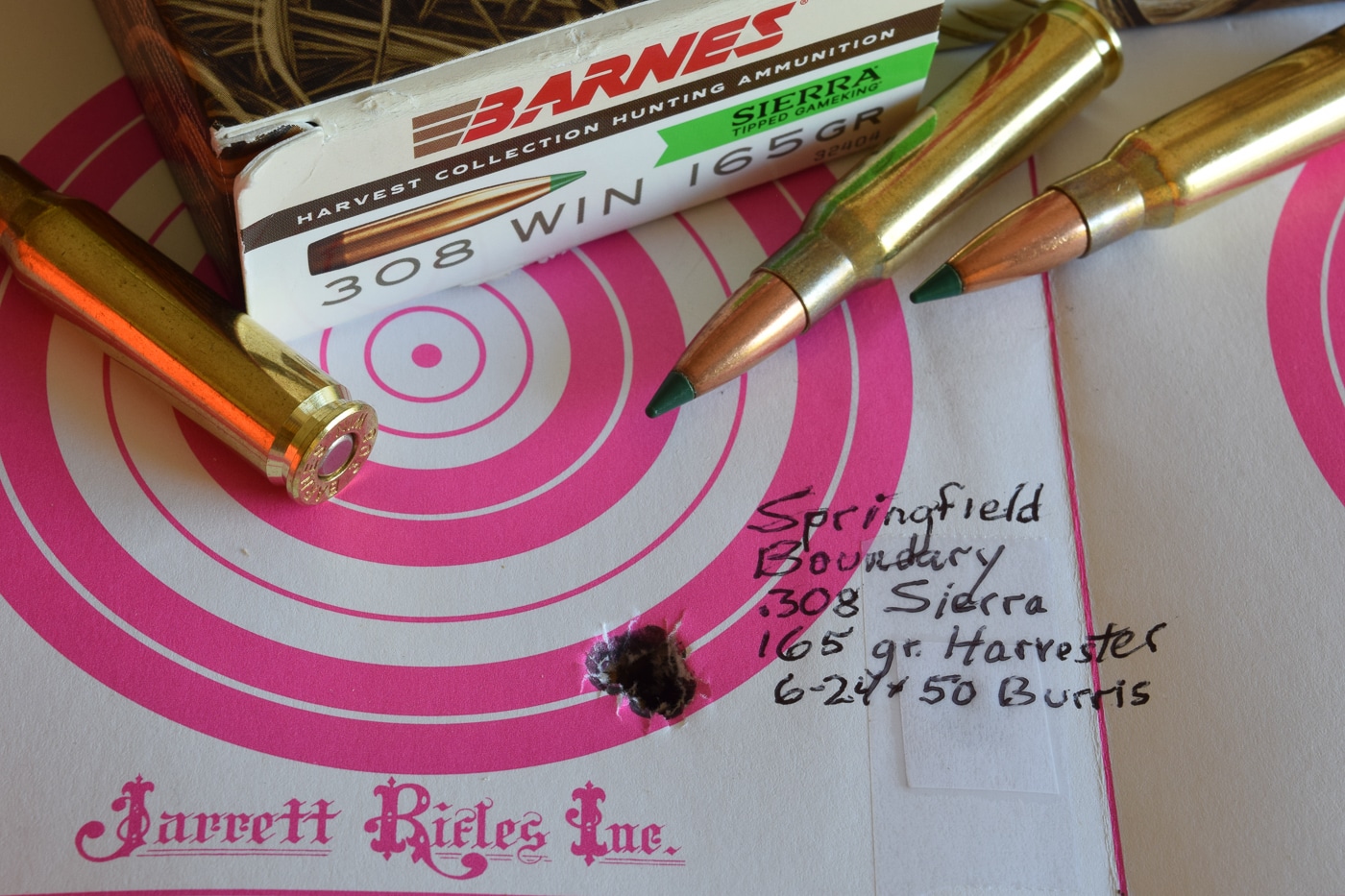
The resolution and brilliance of the Burris scope helped tap the SA Boundary’s inherent accuracy and made the most of its crisp trigger. So did the performance of Sierra bullets in the Barnes loads. Half-minute groups were the norm. The real heart-breaker started as a doubled hole. Then, fearing I’d muff the third shot, I did, horsing the trigger at a pulse bounce. The bullet flew an inch wide. Seeking redemption, I fired a fourth. It joined the pair: a three-shot bug-hole less than .2 between centers. Aarrrgh!
Incidentally, average velocity of the Barnes-loaded 165-grain Sierra Tipped GameKings used for this project came to 2,654 fps, measured over 15 shots with Garmin’s Xero C1 Pro chronograph from the Boundary’s 20-inch barrel.
Conclusion
I like this scope! Seeing the target — and pulse and tremors — clearly, I shot better than with other scopes that day. Checking numbers in the Burris catalog, I like it even better. This new, fifth-generation Fullfield lists for only $600.
Editor’s Note: Please be sure to check out The Armory Life Forum, where you can comment about our daily articles, as well as just talk guns and gear. Click the “Go To Forum Thread” link below to jump in and discuss this article and much more!
Join the Discussion
Featured in this article
Read the full article here


